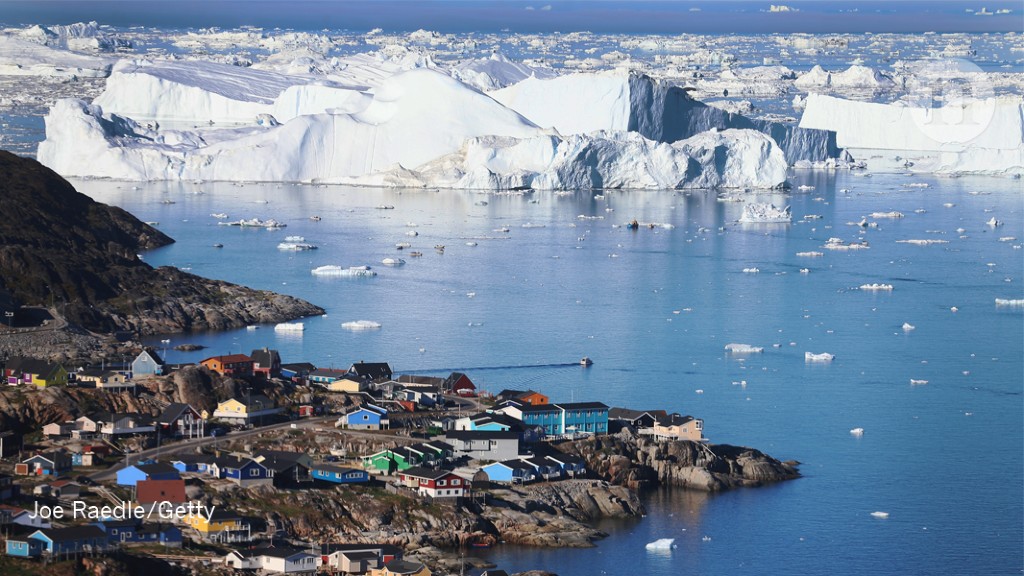Glaciers in non-polar regions, Glaciers are formed when snow accumulates over many years and transforms into huge masses of ice. They are known for their unique ability to move, and some are even described as slow-moving rivers of ice while others resemble expansive fields of ice. These fascinating natural wonders cover approximately 10% of the world’s total land area, with the most significant concentrations found in polar regions such as the Canadian Arctic, Antarctica, Greenland, and Alaska. The largest of these glaciers is the Lambert Glacier in East Antarctica.
However, it’s not just the polar regions that boast impressive glaciers but also glaciers in non-polar regions. Many breathtaking glaciers can also be found outside these areas. In this article, we’ll take a closer look at the top 10 most amazing glaciers in non-polar regions across the globe. These awe-inspiring natural wonders are sure to captivate anyone who visits them, and their stunning beauty is a testament to the majesty of nature.

1. Fedchenko Glacier
The Pamir Mountains the first on the list of glaciers in non-polar regions is in Central Asia are home to one of the most remarkable glaciers in the world, known as the Fedchenko Glacier. Despite its relatively narrow shape, with a maximum thickness of 1000m, this glacier boasts an impressive length of 77km, making it the longest among non-polar glaciers. The Fedchenko Glacier is accompanied by numerous smaller glaciers that flow into it, forming an impressive network of glacial rivers. Its size and unique features make it a truly remarkable natural wonder to behold.
2. Siachen Glacier
The Siachen Glacier the second on the list of glaciers in non-polar regions, situated in the Karakoram Range of the Himalayas, straddles the Line of Control between India and Pakistan. With a length of 76km, it holds the distinction of being the longest non-polar glacier in the world. The area surrounding the glacier is heavily glaciated, earning it the moniker of the “Third Pole.” Due to its strategic location, both India and Pakistan lay claim to the Siachen Glacier, leading to ongoing tensions between the two nations. Despite its geopolitical significance, the Siachen Glacier remains a stunning natural wonder, attracting visitors from around the world to witness its majestic beauty.
3. Furtwängler Glacier
The third on the list of glaciers in non-polar regions. Nestled near the peak of Mount Kilimanjaro in Tanzania, within the African Great Lakes region, lies the Furtwängler Glacier. This small, ephemeral glacier is a remnant of the once-impressive ice cap that covered the mountain’s summit, dating back to around 1650. Sadly, this glacier is disappearing at an alarming rate, with approximately 85% of it melting away between 1912 and 2011. According to experts, it is unlikely that any ice will remain beyond 2060, making the Furtwängler Glacier a tragic example of the devastating impact of climate change. Despite its uncertain future, this glacier remains a significant natural wonder, attracting visitors who come to marvel at its beauty while reflecting on the urgent need to address global warming.
4. Jostedalsbreen
Located in the Sogn Fjordane region of Western Norway, the Jostedalsbreen Glacier the fourth on the list of glaciers in non-polar regions holds the distinction of being the largest glacier in Europe. With a length of 60km, it is also one of the longest non-polar glaciers in the world. Unlike many glaciers, which are affected by temperature changes, the Jostedalsbreen Glacier is maintained primarily by high levels of snowfall. However, due to its location, the glacier is still susceptible to melting at the snouts, or ends of the glacier. The Jostedalsbreen Glacier is characterized by around 50 different glacier arms, with several of them reaching down into valleys. These branches only add to the glacier’s stunning natural beauty, making it a popular attraction for visitors to the region.
5. Fox and Franz Josef Glacier
The Westland Tai Poutini National Park, situated on the South Island of New Zealand, is home to two breathtaking glaciers – the Fox Glacier and the Franz Josef Glacier the fifth on the list of glaciers in non-polar regions. The Fox Glacier stretches an impressive 13km in length, while the Franz Josef Glacier measures 12km long. These two magnificent glaciers are situated approximately 20km apart and share a unique characteristic – they both descend from the Southern Alps and terminate in a temperate rainforest, lush with greenery and abundant wildlife, at an altitude of less than 300m. This stunning juxtaposition of icy glaciers against a verdant forest creates a truly magical setting, drawing visitors from around the world to experience the natural beauty of these two remarkable glaciers.
6. Pasterze Glacier
Nestled within the Hohe Tauern mountain range in Carinthia, Austria, the Pasterze Glacier the sixth on the list of glaciers in non-polar regions is a sight to behold. Situated beneath the towering pyramid-shaped peak of Grossglockner, the highest mountain in Austria, the Pasterze Glacier holds the distinction of being the longest glacier in both Austria and the Eastern Alps. With a length of 8.4km, this glacier is truly a remarkable natural wonder and one of the most impressive non-polar glaciers in the world. Unfortunately, the Pasterze Glacier has undergone significant melting over the years, with its volume decreasing by half since it was first measured in 1851. Despite this, the glacier remains a popular destination for visitors to the region, who come to witness the awe-inspiring beauty of this remarkable natural wonder.
7. Perito Moreno Glacier
Located in the Los Glaciares National Park in southwest Santa Cruz Province, Argentina, the Perito Moreno Glacier the seventh on the list of glaciers in non-polar regions is a stunning sight to behold. As one of the 48 glaciers fed by the Southern Patagonian Ice Field in the Andes system, it is a natural wonder of immense scale and beauty. What’s more, it is one of only three glaciers in Patagonia that is still growing, making it a truly unique and remarkable sight. In fact, the Perito Moreno Glacier holds the distinction of being the third-largest reserve of fresh water in the world, a testament to its immense size and importance. Visitors to the area can witness this natural wonder in all its glory by taking a boat ride on Lake Argentino or even soaring above it in a helicopter for an unforgettable view.
8. Mingyong Glacier
The Mingyong Glacier the 8th on the list of glaciers in non-polar regions, found in China’s Yunnan province, is one of several glaciers in the Tibetan region that are currently experiencing an annual melting rate of 7%, causing it to retreat by 200m over the past four years. This trend is believed to be linked to global warming, as evidenced by the rise of the tree line in the region. The Mingyong Glacier originates from the snows of Mount Meili and has the distinction of being the lowest elevation glacier in China, located at a height of just 2700m. It holds great significance to local inhabitants who consider it to be a sacred site.
9. Biafo Glacier
The Biafo Glacier the ninth on the list of glaciers in non-polar regions, situated in Pakistan’s Karakoram Mountains, stretches for 67km and joins with the 49km long Hispar Glacier at an elevation of 5128m at Hispar La, creating the longest glacial system in non-polar regions. This magnificent glacier, which is the third largest among the glaciers outside the polar regions, serves as a passage between the ancient mountain kingdoms of Baltistan and Nagar and provides an awe-inspiring vista.
10. Gangotri Glacier
The Gangotri Glacier the tenth on the list of glaciers in non-polar regions is situated in Uttarakhand, India, near the border with China. It is a glacier of great significance in India, as its end point, Gomukh, is a major source of the Ganga, which is the world’s third largest river by discharge and a sacred river in the country. This glacier is one of the biggest in the Himalayas and is also a popular pilgrimage site in Hindu tradition.
FINAL THOUGHTS
In conclusion, glaciers in non-polar regions in the world are breathtaking, both in polar and non-polar regions. However, the rapid melting of these glaciers due to global warming is a cause for concern. It is crucial that we take immediate and decisive action to reduce our carbon footprint and curb the rise in temperature. Failure to do so will not only disturb the ecological balance but also lead to devastating natural disasters. It is high time that we recognize the importance of preserving these glaciers in non-polar regions as they form the largest reservoir of fresh water on our planet.







платформа для покупки аккаунтов https://marketplace-akkauntov-top.ru/
магазин аккаунтов социальных сетей magazin-akkauntov-online.ru/
платформа для покупки аккаунтов продажа аккаунтов соцсетей
Account marketplace Account exchange
Website for Selling Accounts Account Trading
Sell accounts Profitable Account Sales
marketplace for ready-made accounts account exchange service
account sale profitable account sales
account selling platform account buying platform
purchase ready-made accounts account buying service
buy and sell accounts online account store
online account store account acquisition
account marketplace buy pre-made account
account sale account exchange
account selling service https://accounts-offer.org
account market https://social-accounts-marketplaces.live
purchase ready-made accounts https://social-accounts-marketplace.live/
маркетплейс аккаунтов https://online-akkaunty-magazin.xyz
fb accounts for sale buying facebook accounts
buying facebook accounts https://buy-ads-account.click/
buy facebook advertising https://ad-account-buy.top
buy aged google ads accounts buy old google ads account
buy facebook old accounts https://buy-accounts.click
buy old google ads account https://buy-ads-invoice-account.top/
buy verified google ads accounts https://buy-account-ads.work
facebook business manager buy https://verified-business-manager-for-sale.org
tiktok ads account buy https://tiktok-ads-account-for-sale.org
buy tiktok business account https://buy-tiktok-ads-accounts.org
tiktok ads agency account https://buy-tiktok-ads.org
¡Saludos, exploradores de oportunidades !
Casinos sin licencia en EspaГ±a con tragamonedas 3D – http://casinossinlicenciaenespana.es/ casinos sin licencia en espana
¡Que vivas triunfos extraordinarios !
¡Saludos, exploradores de la suerte !
Casinosextranjerosenespana.es – Bonos sin depГіsito – https://casinosextranjerosenespana.es/# mejores casinos online extranjeros
¡Que vivas increíbles instantes inolvidables !
¡Hola, exploradores del azar !
casinoonlinefueradeespanol con seguridad avanzada – https://casinoonlinefueradeespanol.xyz/# casinos online fuera de espaГ±a
¡Que disfrutes de asombrosas conquistas legendarias !
¡Saludos, aventureros del riesgo !
casinosextranjero.es – juegos compatibles con mГіvil – https://www.casinosextranjero.es/ п»їcasinos online extranjeros
¡Que vivas increíbles jackpots extraordinarios!
¡Hola, amantes del entretenimiento !
casinoextranjero.es – recomendaciones diarias de casino – п»їhttps://casinoextranjero.es/ п»їcasinos online extranjeros
¡Que vivas premios extraordinarios !
¡Bienvenidos, participantes de emociones !
Casino online fuera de EspaГ±a sin licencias locales – п»їhttps://casinoporfuera.guru/ casinos fuera de espaГ±a
¡Que disfrutes de maravillosas momentos memorables !
Hello advocates of well-being !
Best Air Purifier for Smoke Large Rooms – Tested – http://bestairpurifierforcigarettesmoke.guru/# air purifiers smoke
May you experience remarkable pristine moments !
¡Saludos, apostadores talentosos !
GuГa de casinos no regulados para jugadores de EspaГ±a – http://www.audio-factory.es/ casinos no regulados
¡Que disfrutes de asombrosas triunfos inolvidables !
¡Hola, seguidores de la aventura !
Lista actualizada de casinos sin licencia en EspaГ±a – https://www.casinosonlinesinlicencia.es/ mejores casinos sin licencia en espaГ±a
¡Que vivas increíbles instantes únicos !
¡Saludos, apasionados de la adrenalina y la diversión !
Casinos con bono de bienvenida real y directo – https://bono.sindepositoespana.guru/ casino online con bono de bienvenida
¡Que disfrutes de asombrosas botes sorprendentes!
buy facebook accounts for ads verified accounts for sale database of accounts for sale